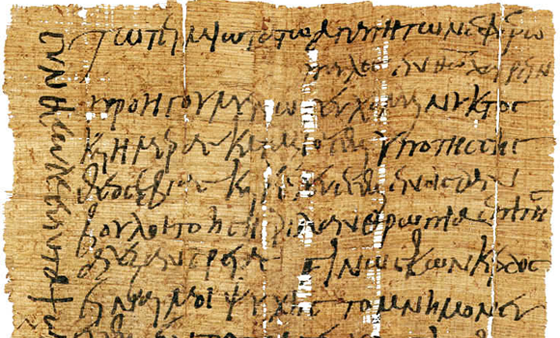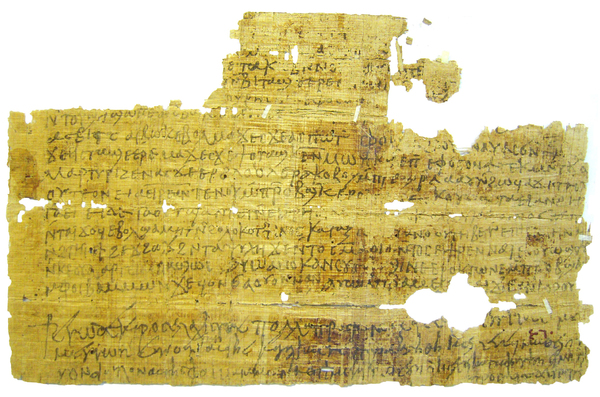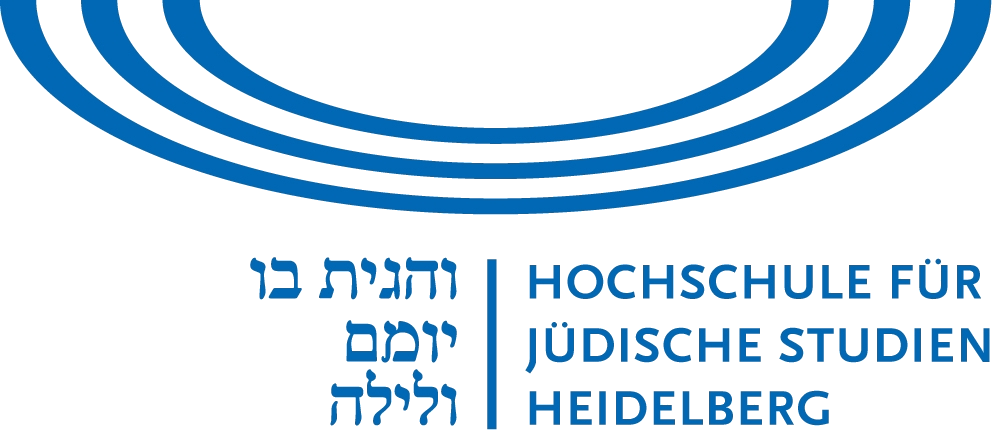A02 |
Antique Letters as a Means of Communication |
current staff members
| Teilprojektleiter | Dr. Rodney Ast |
| akademische Mitarbeiterin | Dr. Loreleï Vanderheyden |
former staff members
| akademische Mitarbeiterin | Dr. Antonia Sarri |
| akademische Mitarbeiterin | Fatma Hamouda |

Gegenstand des Teilprojekts ist die Analyse der etwa 8.000 bislang publizierten griechischen und lateinischen Briefe auf Papyrus, Ostraka und Tafeln (Holz und Blei), die aus der Zeit zwischen dem 3. Jh. v.Chr. und dem 7. Jh. n.Chr. datieren. Darunter fallen sowohl Privatbriefe als auch Geschäftsbriefe verschiedener Art, die in Ägypten sowie auch außerhalb Ägyptens (z.B. in Vindolanda, Griechenland, Nordafrika, usw.) entstanden. Unser Ausgangspunkt ist die These, dass das Verfassen von Briefen als eine soziale Handlung zu betrachten ist, für deren Verständnis es gilt, Materialitätsprofile, Layout- und Formatierungskonventionen, Akteure und Handlung des Schreibens sowie die Zustellungsmethoden und Rezeptionspraktiken der Artefakte zu untersuchen.
Den bisherigen Schwerpunkt der Forschung bildeten die geo-chronologische Verteilung der Briefe und Briefgattungen, das Layout und die Formatierung der Briefe sowie die Beziehungen zwischen Format und kultur-spezifischen Praktiken bzw. Handlungspraktiken. Diese Analyse hat wichtige und weitreichende Ergebnisse unter anderem zu formalen und materialen Aspekten der vornehmlich in Ägypten erhaltenen griechischen Briefe erbracht, die wir in einer Monographie mit dem Titel Material Aspects of Letter Writing in the Graeco-Roman World (600 BC - 300 AD) publizieren werden.

Im Zentrum der nächsten Phase des Projekts stehen spätantike Briefpraktiken aus dem 4. bis zum frühen 8. Jh. n.Chr. Wir wollen dabei vor allem untersuchen, inwieweit das Christentum, die Großgrundbesitzungen sowie die koptische Sprache und Kultur den gesamten Komplex der Briefpraktiken beeinflussten –
angefangen bei der Form und dem Material der Briefe bis hin zu ihrer administrativen, religiösen und sozialen Bedeutung. Für die Aufbereitung unserer Daten und Forschungsergebnisse durch ein dynamisches Datenmanagement sowie enhanced publication werden wir eng mit dem TP INF UP2 zusammenarbeiten, das an der Universitätsbibliothek Heidelberg angesiedelt ist.
Kooperationspartner
- Dr. Isabelle Marthot, University of Basel, Department of Ancient Civilisations, SNSF Ambizione project "Reuniting fragments, identifying scribes and characterizing scripts: the Digital paleography of Greek and Coptic papyri" https://d-scribes.philhist.unibas.ch/en/home/
- Prof. Dr. Jean-Luc Fournet and his team, Chaire Culture écrite de l'antiquité tardive et papyrologie byzantine, Collège de France, Paris.
- Dr. Maria Chiara Scappaticcio, ERC-StG project n°636983 - PLATINUM (Papyri and Latin Texts: INsights and Updated Methodologies. Towards a philological, literary, and historical approach to Latin papyri), University of Naples ‘Federico II’. https://platinum-erc.it/host-institution-and-partnerships/
- Macquarie University (Sydney, Australia), Ancient Cultures Research Centre 'Knowledge Transfer and Administrative Professionalism in a Pre-Typographic Society: Observing the Scribe at Work in Roman and Early Islamic Egypt' (http://scribalpractice.com/) - Malcolm Choat
- New York University, Institute for the Study of the Ancient World - Roger S. Bagnall and Tom Elliott
- Duke University, Duke Collaborative for Classics Computing (DC3) - Joshua Sosin
- Katholieke Universiteit Leuven, Trismegistos Project (www.trismegistos.org) - Mark Depauw
Veranstaltungen
18. Juni 2019
Gastvortrag: Dr. Marco Fressur, "Informal and documentary hands for Latin and Latin-Greek books" (in Kooperation mit TP A08)
28. Mai 2019
Gastvortrag: Dr. Serena Ammirati, "How to write a letter: Latin everyday‘script from abecedaries to epistolography"
13. February 2019
Gastvortrag: Dr. Loreleï Vanderheyden
, "Greek-Coptic bilingualism and digraphism in the archive of Dioscorus of Aphrodito (6th century CE, Egypt)"
7. März 2018
Gastvortrag: Prof. Dr. Giuseppina Azzarello, "ἀρχὴ μεγίστη τοῦ βίου τὰ γράμματα: Überlegungen zur Schreibfähigkeit im Griechisch-Römischen und spätantiken Ägypten"
28.-29. September 2017
2-tägige Tagung zum Thema "Uniformity and Regionalism in Latin Writing Culture in the First Millennium of the Common Era"
Juni/Juli 2015
2 Vorträge - Alexander Jones, Professor of the History of the Exact Sciences in Antiquity in the Institute for the Study of the Ancient World at New York University, "The Materiality of Time in Antiquity" (zusammen mit A03) und Workshop zum Thema "The Materiality of Time in Antiquity"
09.-11. Dezember 2014
3-tägiger Workshop Prof. Malcolm Choat (Macquarie University, Sydney), "Creating Authority. Documents as Artifacts in the Greco-Roman World"
Publikationen
Monographien und Artikel
- Sarri, A. (2018). "Material Aspects of Letter-Writing in the Greco-Roman World (c. 500 BC to c. 300 AD)", Berlin/München/Boston (MTK).
- Sarri, A. (2016). "Handshifts in Letters", Proceedings of the 27th International Congress of Papyrology at Warsaw, 2013
- Sarri, A. (2014). "A Letter of Proklos and Asklepiades. P.Lond. inv. 2553 + P.Col. VIII 211," Greek Roman and Byzantine Studies 54, 37-44.
- Ast, Rodney (2018), „Telling Them by Their Hands: What Paleography Has to Offer Prosopography“, in: Francisca A.J. Hoogendijk u. Steffie van Gompel (Hgg.), The Materiality of Texts from Ancient Egypt. New Ap-proaches to the Study of Textual Material from the Early Pharaonic to the Late Antique Period (Papyrologica Lugduno-Batava 35), Leiden, 27–34. 87.
- Ast, R. (2017). "Signs of Culture and Learning in Greek Documents: the Case of spiritus asper," in G.N. Macedo und M.C. Scappaticcio (eds.) Actes du colloque international “Signes dans les textes, textes sur les signes”, Université de Liège, 6 et 7 septembre 2013 (ca. 15 Seiten).
- Ast, Rodney (2015), „Writing and the City in Later Roman Egypt. Towards a Social History of the Ancient ‘Scribe’“, in: Center for Hellenic Studies Research Bulletin 4 (1), Washington D.C. (http://www.chs-fel-lows.org/2016/03/29/writing-and-the-city-in-later-roman-egypt/).
- Ast, Rodney/Berkes, Lajos (2015), „A Letter from Athanasios the Scholastikos Mentioning Constantinople,“ in: papyri.info (http://papyri.info/ddbdp/ddbdp;2015;1).
- Ast, R. (2014). "The Hand of P. Mich. III 165 and P.Bagnall 3," Zeitschrift für Papyrologie und Epigraphik 190, 231-233.
- Ast, R. und G. Azzarello (2013). "New Perspectives on the Gemellus Archive: Sabinus and His Correspondence," in: Carolin Arlt u. Martin A. Stadler (Hgg.), Das Fayyum im Hellenismus und Kaiserzeit: Fallstudien zu multikulturellem Leben in der Antike, Wiesbaden, 19-17.
- Ast, R. und G. Azzarello (2012). "A Roman verteran and his skilful administrator. Gemellus in light of unpublished papyri," in: P. Schubert (Hg.), Proceedings of the 26th International Congress of Papyrology, Geneva 2010, Genf, 67-71.
- Ast, R. und R.S. Bagnall (2012). "A Letter from Taos to Markos," in: Diletta Minutoli (Hg.), Inediti offerti a Rosario Pintaudi per il suo 65˚ compleanno, Florenz, 233-236.
- Hamouda, Fatma (2018), "Communication and the Circulation of Letters in Roman Egypt" (Dissertation).
- Vanderheyden, Loreleï (2020), "The Figure of Apollos, Father of Dioscorus, in the Light of Coptic Letters from Sixth-Century Aphrodito", in Living the End of Antiquity – Individual Histories from Byzantine to Islamic Egypt, S. R. Huebner et al. (eds.), De Gruyter, p. 119-128.
- Vanderheyden, Loreleï (2018), "Lettre" (edition of the P.Heid.Kopt. inv.174 = P.Heid.Kopt. 15), in Coptica Palatina. Koptische Texte, bearbeitet auf der 4. Internationalen Sommerschule für Koptische Papyrologie. Veröffentlichungen aus der Heidelberger Papyrussammlung. A. Boud’hors, A. Delattre, T. S. Richter, G. Schenke & G. Schmelz (ed.), Universitätsverlag Carl Winter, 2018, p. 96-101.
- Vanderheyden, Loreleï (in Druck), "Les lettres coptes des archives de Dioscore d’Aphroditê (P.Aphrod.LettresCopt. I)", Paris.
Die Mitglieder des Teilprojekts A02 sind zudem mit insgesamt sieben Artikeln an folgendem gemeinsamen SFB-Band beteiligt: "MTK 1: Layouten und Gestalten; Metall; Papyrus; Sammeln, Ordnen und Archivieren; Textkulturen; Ton; Wachs".
Digitale Veröffentlichungen
- Ast, R. (2013). PapPal, www.pappal.info (Unter Mitarbeit von C. Lanz)


